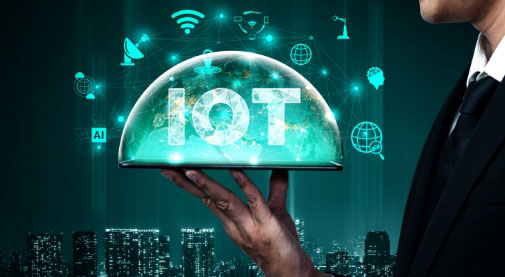How the Internet of Things (IoT) may help your company
IoT solutions have been effectively used in various fields, including transportation, construction, manufacturing, and healthcare. It simplifies and improves the control of multiple devices, as well as allowing for predictive maintenance.
There’s a good example of how IoT can track product performance after it’s been sold. Rolls-Royce fitted aircraft engines with sensors that allowed data to be sent from the plane to the ground. Thousands of sensors capture a vast amount of data: during a flight, the Boeing 787 generates roughly 500 GB of data sent to Rolls-Royce operations centers.
All of the jet data (pressure and temperature, jet height, fuel flow, and so on) may be stored and analyzed in the cloud—currently, the business monitors over 4,500 engines. The true performance of Rolls Royce engines may be determined using this kind of data processing.
Be on the same page as your customers.
The amusement park personnel may utilize RFID technology to track visitor locations, which rides they favor, how much time they spend waiting in line, and so on. Visitors may also link their credit cards to their bracelets to make purchases more easily.
Customers should be kept informed.
Customers may get real-time information about goods and services thanks to the Internet of Things (IoT solutions). Companies that specialize in retail confess that most of the calls they receive through call centers are concerning parcel arrival status. Customers may track their deliveries online for added convenience.
Improved decision-making
IoT solutions aid in the tracking of a variety of corporate operations. An adequate amount of data provides a foundation for sound decision-making. Top management can acquire up-to-the-minute information on all company elements if staff credentials and working equipment include embedded IoT sensors.
In the cloud, the data is stored and processed. Managers in charge of making decisions can use a mobile app to obtain data from various devices. With information at their fingertips, they can keep track of how changes influence business processes and make better decisions as necessary. Data collection and analysis reveal new business prospects and opportunities.
Impacts on the way of IoT implementation
Concerns about security

According to a poll conducted by Kaspersky Lab, 65 percent of respondents worldwide feel that IoT solutionscan compromise Internet security. Cyber-attacks are feared by 77 percent of industrial enterprises. However, statistics show that there is no reason to be concerned. Many businesses are concerned about the security of their information and have invested in security bespoke software solutions. As a result, the percentage of cyberattacks in the industrial sector has dropped from 36% to 16%.
Technical restrictions
The connectivity issue is concerning: connecting so many devices is one of the most difficult aspects of the Internet of Things. It may need considerable modifications to the present Internet connection paradigm. Internet providers still use the centralized client-server architecture to link various devices into a network. Although this connection type can handle IoT solutions, the number of connected devices is increasing.
Employees’ mistrust
Many senior employees may be hesitant to work alongside new technologies. According to the research, utilizing workplace wearables reduces job stress, accelerates team development, and boosts overall productivity. With the use of smart workplace badges, computer scientists were able to track the behavior of call center employees.
They looked at how people spoke to one another, the tone of their voices, and how they moved. They established that automating everyday routines will have a long-term positive influence on productivity by analyzing data from wearables. For example, the call completion measure improved by 23% if operators had lunch together instead of staying alone in the office. Managers can use this information to determine whether an employee appreciates working in a team, is content with working circumstances, and so on.
Employees are often less skeptical of digital transformation, while some workers remain skeptical of new technologies. Improved communication between employees and senior management is the only approach to eliminate employee doubts and earn their trust. Last but not least, they should explain the importance of digital transformation to their subordinates and make sure that everyone understands what it is and why it is necessary.
Bottom line
The number of devices linked to the Internet is increasing year after year, and the Internet of Things (IoT solutions) is here to stay. IT experts provide solutions that address security concerns and technological limitations that stymie digital change. But one thing is certain: despite existing roadblocks, the Internet of Things continues to infiltrate our lives, from the office to leisure pursuits. Stop falling behind and take advantage of the benefits of this technological development to open up new company chances.



